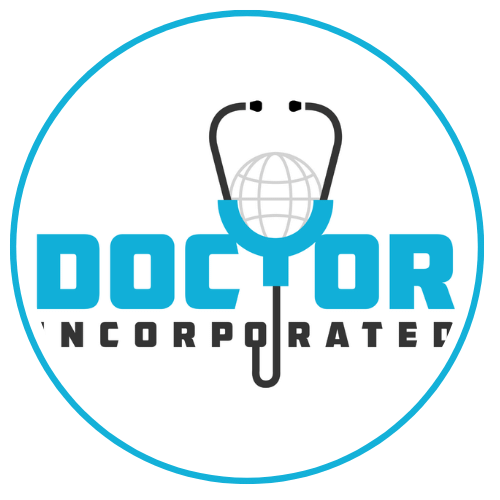Three Defenses
There are three basic defenses that humans have against viral pathogens in the world.
- Herd Immunity
- Vaccinations/medications
- Social Distancing/personal protection
All three play a vital role in reducing serious illness, death, and socio-economic chaos on the planet.
When it comes to COVID-19, the vaccination/medication route is not an option yet. We just aren’t there, but hopefully we will arrive at an effective vaccine or treatment in the next 12 months.
Two Remaining Options
This leaves two other broad categories for the management of COVID-19.
Social distancing/personal protection is where our country, and most of the world, has placed all of its early mitigation strategy. This was done for the dual purpose of saving the most vulnerable, as well as to steward our limited healthcare resources. It has been modestly successful with a few outliers.
For the vulnerable, social distancing and personal protection must continue, until we can adequately protect them with a vaccine.
Herd immunity has been perceived to be too risky.
Current State
Heading into Memorial Day, 3% of the US population has been infected, and an estimated 5% has developed an immunity. We should pat ourselves on the back, through our mitigation efforts there were only 90,000 deaths, rather than the projected 200,000. Laudable statistics based on good but imperfect public health policies with the pandemic.
But these percentages also reveal that herd immunity has also been stymied by our all-in social distancing strategy. Even hard-hit NYC has only created an estimated 20% population immunity.
Time For Herd Immunity
I contend, while we await the development of effective vaccines and treatment, that this is the time to allow for herd immunity to develop among our non-vulnerable population.
I am not alone. Within Europe, Sweden is the leading voice for the controlled herd immunity strategy, and within the US Senate, Dr. Rand Paul from Kentucky is spearheading this position.
Beyond herd immunity, I believe our aggressive social distancing is harmful to physicians and healthcare workers. The economic harms have been well documented, but the harm to their health and herd immunity also a concern.
I worry that our critical healthcare worker population is at greater risk due to toned down immune systems from our current mitigation strategy, especially if it continues. The normally revved up immune surveillance system for healthcare workers has been placed in a plastic bubble, so to speak. Ultimately, I fear this will lead to more severe cytokine storms secondary to COVID-19 infection due to the shielded exposure. The longer we go with social distancing and maxed out personal protection policies, the greater this risk is to all healthcare workers.
Don’t get me wrong, I am all for using proper personal protection and universal precautions in the clinical setting. I also favor vaccines and treatments when they become available. I think we should protect the vulnerable from the public & their healthcare team through measures like telemedicine, social distancing, and personal protection measures for those interacting with them.
But for the general population, it’s time to allow herd immunity for the non-vulnerable. The socio-economic cost of not doing this is far too high. The risks of prolonging the pandemic due to non-immunity is far too high.
Comparison to Spanish Flu Pandemic
Let’s use the Spanish Flu pandemic of 1918-1919 as a comparison to our current state where both only had two interventions at their disposal: herd immunity and social distancing.
The geopolitical dynamics of 1917-1920 led to its worldwide propagation in a tri-modal pattern, with the 2nd wave being the largest and most lethal as herd immunity set in.
This 3-year length of time and the trimodal pattern is what we are trying to avoid repeating.
But there are differences from COVID-19 and the Spanish Flu of 1918.
- The mitigation efforts in flattening the curve, and building barriers around the vulnerable were not even close to our current robust state. The factors that separate the two eras include our understanding of viruses, public health, as well as the speed of communication and data sharing.
- Having sheltered the vulnerable, we are now able to safely let herd immunity run its course among the non-vulnerable. Aggressively protecting the vulnerable was not part of the program in the Spanish flu pandemic as the vulnerable were much more co-mingled.
- Lastly COVID-19 and the Spanish Flu are both respiratory viruses, but their victims had differing profiles as well. The Spanish flu favored young people with half of the deaths involving 20-40-year-olds, and it especially seemed to ravage pregnant women and their infants. COVID-19 favors those over 65 with co-morbidities and mostly is less harmful to pregnant patients, pediatric populations, and those under 50.
Tension In This Space
I get it, there is a real tension that exists in the space between herd immunity development and social distancing, as both strategies await the arrival of effective vaccination-treatment interventions.
Within that space, there are many unanswered questions. It is interesting to watch as scores of nations deploy socio-economic-health policies that reflect their best guess at where to land in this space. Hopefully we’ll all learn from each other both during and after the pandemic. For example, as much as I like Sweden’s approach to herd immunity, they failed to protect their vulnerable populations like nursing homes, before deploying the policy. This led to many unnecessary deaths, which even Swedish policymakers acknowledge.
As much as Americans like to lead, I think our diversity and poorly aligned political system make us a poor leader in this space as well. Oh, we certainly have bright scientists and business people, but both Republican and Democratic ideologies prevent us from arriving at objective mutually satisfying policy positions. With so many uncertainties, I think it’s not possible to have the exact right answer, although each party will claim that they do.
The questions are not political, but are more germane to answering worldwide unknowns including how long it will take to reach herd immunity with COVID-19, how long will the immunity last, and how much disruption can each nation individually and corporately tolerate with either policy of social distancing, or herd immunity?
The Cost of Returning To Normal
Put another way, how many deaths is a nation willing to allow in exchange for a more rapid return to a normal pattern of socio-economic life?
Given that our current data demonstrates over 99% non-lethal immunity development among the non-vulnerable population, I think it’s time to let herd immunity run its course. 80% of those infected only develop mild symptoms and it is projected that herd immunity will be reached when 60% of the population has COVID-19 antibodies.
As much as I support that our aggressive mitigation process has saved lives, I can’t pretend that it hasn’t come without a net cost. Isolating humans, and sheltering them in place has dramatically inflicted social and healthcare fear into people so that now they don’t seek healthcare from TREATABLE illnesses. Whether it’s people dying from heart attacks, strokes, and pneumonia at home, or it’s the untold surge in suicide, delayed cancer diagnosis, and malnutrition-related deaths. These are un-counted deaths that are covered up by the COVID-19 numbers. Some even cleverly count these as “COVID-19 deaths” for a number of financial and politically motivated reasons.
Shelter and Herd Immunity Together
With the vulnerable now effectively sheltered, we are in a new phase.
Death prevention is still a priority, but now the net from deaths prevented in an aggressive social distancing policy versus deaths prevented in a liberal herd immunity policy is likely getting closer to zero.
Failure to allow for herd immunity will continue to imprison the rest of the essential and non-essential US population, place our healthcare workforce at GREATER risk, and will destroy our country’s economy for years.
I conjecture the continued social distancing policy with it’s associated economic collapse will cause massive psychological-social-health related carnage. This approach could lead to more morbidity and mortality than if we allowed for a policy of herd immunity while shielding the vulnerable. The reality is that the 2nd spike in a herd immunity policy will be much larger in size. But with the vulnerable shielded ahead of time, the number of deaths will be much lower by percentage.
Phased Approach to Herd Immunity
Lifting our social distancing policies to the general public, allowing for a phased return to normal, a continued protection of the vulnerable until vaccines and treatments are available, and allowing healthcare workers to develop their natural immunity (later to be boosted by vaccines) is the right next step.
I recommend herd immunity be embraced in 3 phases in the coming months.
-
Phase 1 opening public spaces, parks, beaches, restaurants, entertainment venues, all small businesses, and faith communities from Memorial Day to Labor Day
-
Phase 2 Allowing for a return of large spectator sporting venues in the summer
-
Phase 3 Opening schools and Universities in the Fall
These 3 phases, especially the 3rd phase, will quickly accelerate the development of immunity among our non-vulnerable population. Once that spike occurs in the fall, much like Sweden, we’ll be on our way to herd immunity by the end of the year.
Let’s rip the band-aid off, and prevent a prolonged sine wave-like staccato of prolonged socioeconomic disruption.

Dr. Inc.


